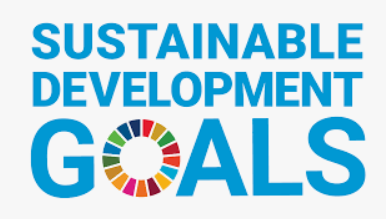About CEN
The European Committee for Standardization is one of three European Standardization Organizations (together with CENELEC and ETSI) that have been officially recognized by the European Union and by the European Free Trade Association (EFTA) as being responsible for developing and defining voluntary standards at European level.
- |


Project
| Reference | EN ISO 21268-3:2019 |
|---|---|
| Title | Soil quality - Leaching procedures for subsequent chemical and ecotoxicological testing of soil and soil-like materials - Part 3: Up-flow percolation test (ISO 21268-3:2019) |
| Work Item Number | 00444106 |
| Abstract/Scope | This document specifies a test, which is aimed at determining the leaching behaviour of inorganic and organic substances from a soil and soil-like materials. The method is a once-through up-flow percolation test under standardized conditions of flow rate. The material is leached under dynamic hydraulic conditions. The document has been developed to measure the release of inorganic and organic substances from soil and soil-like material as well as to produce eluates for subsequent ecotoxicological testing. For ecotoxicological testing, see ISO 15799[6] and ISO 17616[7]. The test results enable the distinction between different release patterns, for instance wash-out and release under the influence of interaction with the matrix, when approaching local equilibrium between material and leachant. This test method produces eluates, which can subsequently be characterized by physical, chemical and ecotoxicological methods in accordance with existing standard methods. The results of eluate analysis are presented as a function of the liquid/solid (L/S) ratio. The test is not suitable for substances that are volatile under ambient conditions. NOTE 1 Volatile organic substances include the low-molecular-weight substances in mixtures such as mineral oil. NOTE 2 It is not always possible to optimize test conditions simultaneously for inorganic and organic substances and optimum test conditions can also vary between different groups of organic substances. Test requirements for organic substances are generally more stringent than those for inorganic substances. The test conditions suitable for measuring the release of organic substances will generally also be applicable to inorganic substances. NOTE 3 Within the category of organic substances, a significant difference in behaviour exists between the more polar, relatively water-soluble compounds and apolar, hydrophobic organic substances (HOCs). In the latter case, mechanisms of release (e.g. particle-bound or dissolved organic carbon-bound) can be more crucial as well as sorption losses of soluble HOCs on different materials with which they come in contact (e.g. bottles, filters). The test and the results should be used for leaching of organic substances only with thorough consideration of the specific properties of the substances in question and the associated potential problems. NOTE 4 For ecotoxicological testing, eluates representing the release of both inorganic and organic substances are needed. In this document, ecotoxicological testing is also meant to include genotoxicological testing. NOTE 5 The test is generally not suitable for soils with hydraulic conductivities below 10−8 m/s (see also Annex B). It can be difficult to maintain the designated flow rate already in the range of saturated hydraulic conductivity between 10−7 m/s and 10−8 m/s. The application of this test method alone is not sufficient for the determination of the leaching behaviour of a material under specified conditions different to those from the test procedure, since this generally requires the application of several test methods, behavioural modelling and model validation. This document does not address issues related to health and safety. It only determines the leaching properties as outlined in Clause 4. |
| Status |
Published
|
| Reference Document |
ISO 21268-3:2019 (EQV)
|
| date of Availability (DAV) | 2019-10-16 |
| ICS | 13.080.05 - Examination of soils in general |
| A-Deviation(s) | |
| Special National Condition(s) |
Legal
| Directive(s) | |
|---|---|
| Mandate(s) | |
| Citation in OJEU |
Implementation Dates
| date of Ratification (DOR) (1) | 2019-09-01 |
|---|---|
| date of Availability (DAV) (2) | 2019-10-16 |
| date of Announcement (DOA) (3) | 2020-01-31 |
| date of Publication (DOP) (4) | 2020-04-30 |
| date of Withdrawal (DOW) (5) | 2020-04-30 |
Relations
| Supersedes | CEN ISO/TS 21268-3:2009 |
|---|---|
| Superseded by | |
| Normative reference (6) |
ISO 10523
ISO 11465 ISO 3696 ISO 5667-3:2018
ISO 5725-1:1994
ISO 5725-2:1994
ISO 7027-1
|
| Bibliographic references (7) | |
| Sales Points |

|
(1) Date of ratification (dor) date when the Technical Board notes the approval of an EN (and HD for CENELEC), from which time the standard may be said to be approved
(2) Date of availability (dav) date when the definitive text in the official language versions of an approved CEN/CENELEC publication is distributed by the Central Secretariat
(3) Date of announcement (doa) latest date by which the existence of an EN (and HD for CENELEC), a TS or a CWA has to be announced at national level
(4) Date of publication (dop) latest date by which an EN has to be implemented at national level by publication of an identical national standard or by endorsement
(5) Date of withdrawal (dow) latest date by which national standards conflicting with an EN (and HD for CENELEC) have to be withdrawn
(6) This list of normative references is purely indicative. The only official list of normative reference is the list of the published standard.
In the case of undated standard, a link to the last dated version is provided.
In the case of series, a link to each standard identified in the series is provided.
We also invite you to check (via the website) whether corrigenda and/or amendments shall be read in conjunction with the main standard.
(7) This list of bibliographic references, which is provided for homegrown standards only, is purely indicative and was retrieved automatically using available XML files. It is limited to publications that have been published in the XML format. For standards that are not homegrown, the corresponding international standard should be consulted.



